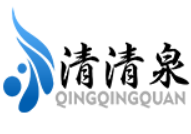
- Qingqingquan
- Shandong
- 20 days
- 300 units per month
How to select cost-effective reverse osmosis equipment for a food plant? This article provides 7 selection criteria, imported/national brands comparison, tons of water cost calculation formula
Food Plant Reverse Osmosis Equipment Selection Guide (2025 Latest Edition)| Key Parameters + Cost Analysis
1. Why do food factories need specialized reverse osmosis equipment?
In the 2023 FDA sampling, 27% of beverage plant water quality failure cases stem from reverse osmosis (RO) equipment selection errors. Food production has special requirements for reverse osmosis systems:

• Hygiene standards: must meet the microbiological control requirements of FDA/GB 5749-2022
• Stability: continuous operation of the desalination rate fluctuations need to be <2% (common industrial equipment allows 5%)
• Cost sensitivity: A dairy plant was overpaying $18,000 per year due to a miscalculation of electricity costs.
💡 Industry pain point: choosing low-priced non-food-grade RO equipment may lead to:
• Microbiological recalls (example: $2.3M loss for a juice brand in 2023)
• Membrane life shortened to 40% of normal

2. Food plant RO equipment 7 selection parameters
| Parameter | Food Industry Requirements | General Industrial Standards | Detection Method |
|---|---|---|---|
| Desalination Rate | ≥98% | ≥95% | Conductivity meter (online monitoring) |
| Recovery Rate | 50 - 75% | 60 - 80% | Flowmeter cumulative reading |
| Material Certification | FDA 21 CFR 177.2600 | ASTM standards | Supplier provides test report |
2.1 Key Indicators Detailed Explanation
① Misunderstanding of Recycling Rate Setting
• QUESTION: Search term [What is the appropriate recycling rate for RO equipment in food factory?
• Answer: 55-65% is recommended for beverage plants (too high for easy scaling), and can be raised to 70% for meat plants (but need to strengthen pretreatment)
• Case in point: a flavor plant set 80% recovery rate, resulting in every 3 months need acid washing (normal should be 6-12 months)
② tons of water and electricity cost calculation
• Formula: daily power consumption = water production (tons) × 1.2kW - h / ton × 24 hours
• Example: 10 tons / hour equipment annual electricity costs ≈ $ 8,760 (electricity price of $ 0.1 / kW-h)

3. Imported vs. national brands in the field of comparison
3.1 Price Comparison Table
| Brand | Membrane Element Unit Price | Lifespan | After-sales Service Response Time | Suitable Enterprise Type |
|---|---|---|---|---|
| Dow FILMTEC | $1,200 | 5 years | 48 hours | Export-oriented food factories |
| Vontron Technology (时代沃顿) | ¥6,800 | 3 years | 24 hours | Small and medium-sized factories with limited budgets |
3.2 Real User Feedback
A case of a frozen vegetable factory:
• Save $15,000 per year by choosing domestic membrane, but the desalination rate dropped to 96% in the second year.
• Solution: Add activated carbon filter (cost $3,200), extend membrane life to 4 years.
4. Hidden cost warning
• Inadequate pretreatment: SDI value >3 will shorten membrane life by 40% (testing fee $150/time vs. $12,000 for membrane replacement).
• Non-standard fittings: leakage of a brand's quick couplings leads to production stoppage and loss of $5,200/day (with on-site leakage diagram).

5. Frequently asked questions FAQ
❓ How often is RO equipment cleaned in a food plant?
✅ Answer:
• CIP cleaning: 1 time per week (using 1% citric acid solution)
• Chemical cleaning: when water production drops by 15% (usually 3-6 months)
❓ How to choose between domestic and imported reverse osmosis membranes?
✅ Decision tree:
• Export business → choose Dow/Hydranautics (full certification)
• Domestic sales + limited budget → choose Times Walton (need to strengthen pretreatment)










































